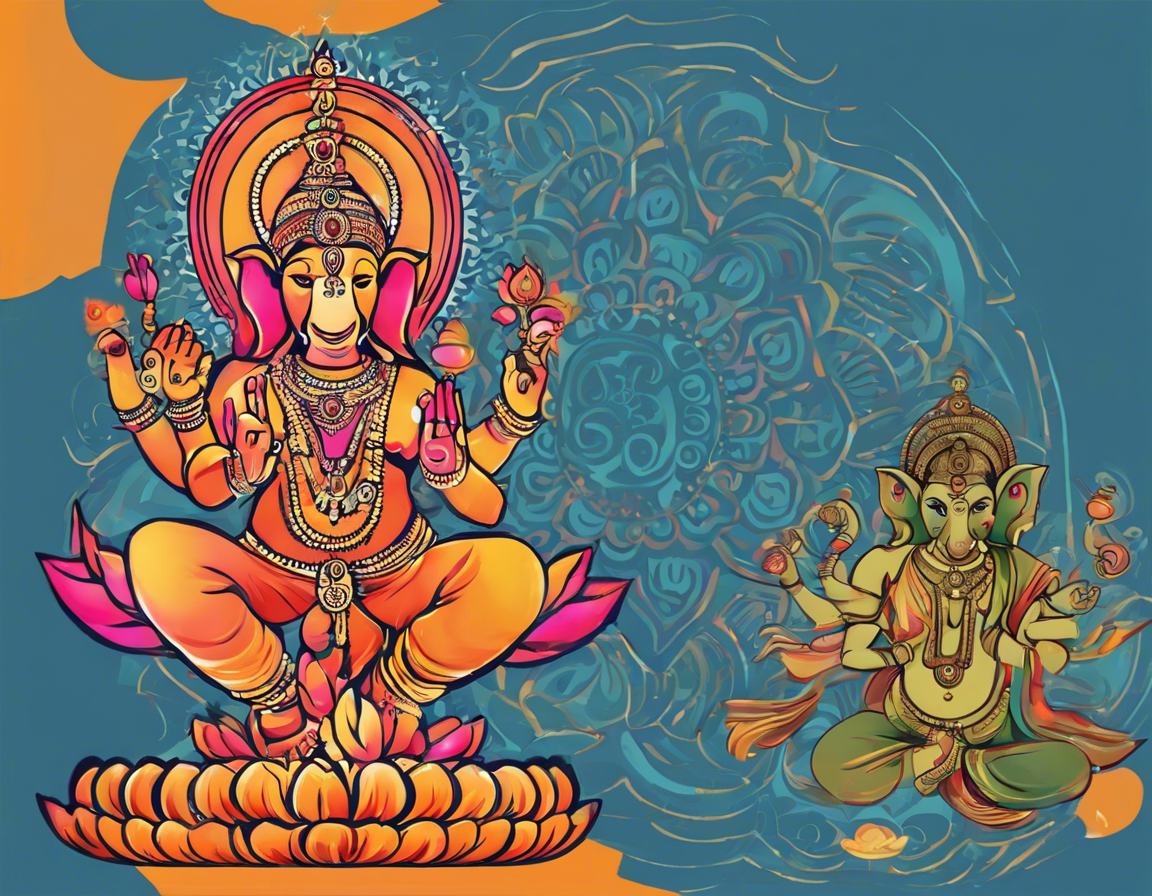Anant Chaturdashi, also known as Ananta Chaturdashi, is a significant Hindu festival celebrated on the fourteenth day of the waxing moon in the Bhadrapada month of the Hindu calendar (usually falling in August or September). This auspicious day holds great importance for devotees, especially in Western and Southern parts of India. Let’s delve into the significance and celebrations of Anant Chaturdashi to understand its spiritual and cultural essence.
Significance of Anant Chaturdashi:
Anant Chaturdashi is dedicated to Lord Vishnu, specifically in his form as Ananta, the cosmic serpent. The term “Anant” means infinite or eternal, symbolizing the timeless nature of the supreme reality. Devotees observe this day to seek blessings for longevity, prosperity, and well-being for themselves and their families.
Rituals and Observances:
- Ananta Vrat:
- Many devotees observe a fast known as the Ananta Vrat on this day. They wake up early, take a ritual bath, and offer prayers to Lord Vishnu.
-
The fast is broken after performing the necessary rituals and prayers in the evening.
-
Tying Ananta Sutra:
-
One of the prominent rituals of Anant Chaturdashi involves tying a sacred thread, known as the Ananta Sutra or Ananta Dhara, around the wrists. This thread is usually a consecrated yellow thread with knots, symbolizing various virtues and blessings.
-
Puja and Offerings:
-
Special prayers and pujas are offered to Lord Vishnu on this day. Devotees visit Vishnu temples, recite hymns, and offer flowers, incense, and prasad as a mark of devotion.
-
Immersing Ananta:
- A significant custom on Anant Chaturdashi is the immersion of Ananta idols or sacred threads in water bodies. This ritual signifies the cyclical nature of life and the impermanence of material existence.
Celebrations of Anant Chaturdashi:
Ganesh Visarjan:
Anant Chaturdashi marks the conclusion of the eleven-day-long Ganesh Chaturthi festival in many regions. Devotees bid farewell to Lord Ganesha by immersing his idols in water bodies with grand processions, music, and dance. The immersion of the Lord’s idol is a poignant moment filled with prayers and chants invoking his grace and blessings.
Community Festivities:
Anant Chaturdashi is also celebrated as a community festival, bringing people together in joy and devotion. Various cultural programs, bhajans, processions, and feasts are organized in localities to commemorate the day. Families and friends gather to share sweets, exchange gifts, and participate in the festive spirit.
Spiritual Reflection:
On Anant Chaturdashi, devotees reflect on the eternal nature of the divine and the transient nature of life. It is a time for introspection, forgiveness, and seeking spiritual upliftment. The rituals and prayers performed on this day are believed to bring peace, harmony, and auspiciousness into one’s life.
Environmental Consciousness:
In recent years, there has been a growing awareness about the environmental impact of immersion ceremonies. Many initiatives promote eco-friendly ways of celebrating Anant Chaturdashi by using clay idols, organic materials, and minimizing water pollution. These eco-conscious practices align with the reverence for nature and sustainable living.
Frequently Asked Questions (FAQs) about Anant Chaturdashi:
1. What is the story behind Anant Chaturdashi?
Anant Chaturdashi commemorates the divine serpent Ananta, who is said to uphold the earth and symbolize infinity. The day is dedicated to worshipping Lord Vishnu in his eternal form.
2. Why is tying the Ananta Sutra significant?
Tying the Ananta Sutra during Anant Chaturdashi is believed to bring blessings of protection, prosperity, and longevity. Each knot in the sacred thread is symbolic of a specific prayer or desire.
3. How is Anant Chaturdashi celebrated in different regions of India?
While the essence of the festival remains the same, the customs and traditions of Anant Chaturdashi may vary across regions. For example, in Maharashtra, it coincides with Ganesh Visarjan, whereas in Karnataka, it is observed with cultural programs and feasts.
4. Can non-Hindus participate in Anant Chaturdashi celebrations?
Anant Chaturdashi is a festival of devotion and spiritual significance, and people of all faiths are welcome to participate in its celebrations. It is a time for unity, reverence, and spreading goodwill.
5. How can one observe Anant Chaturdashi at home?
To observe Anant Chaturdashi at home, one can wake up early, perform a ritual bath, offer prayers to Lord Vishnu, tie the Ananta Sutra, recite Vishnu Sahasranama, and partake in charitable acts or feeding the needy.
6. What prayers are recited on Anant Chaturdashi?
Devotees often recite Vishnu Sahasranama (the thousand names of Lord Vishnu), the Ananta Vrata Katha (the legend of Anant), and sing bhajans dedicated to Lord Vishnu on Anant Chaturdashi.
7. Is charity or donation significant on Anant Chaturdashi?
Yes, acts of charity, kindness, and donations are considered auspicious on Anant Chaturdashi. Helping the less fortunate, feeding animals, or supporting a noble cause are seen as virtuous deeds.
8. What is the spiritual message of Anant Chaturdashi?
Anant Chaturdashi conveys the message of impermanence and eternity. It reminds us of the cyclical nature of life, the importance of spiritual pursuits, and the eternal presence of the divine in our lives.
9. Are there any specific food offerings for Anant Chaturdashi?
Devotees often prepare favorite dishes of Lord Vishnu, such as payasam (kheer), fruits, sweets, and traditional delicacies, as offerings during the puja on Anant Chaturdashi.
10. How can one make the Ganesh Visarjan and Anant Chaturdashi celebrations eco-friendly?
To make the festivities eco-friendly, one can opt for biodegradable idols, natural colors for decoration, minimize plastic usage, and participate in cleanup drives post-immersion to protect the environment.
In conclusion, Anant Chaturdashi is a festival rich in symbolism, tradition, and spiritual significance. It serves as a reminder of the eternal nature of divinity and the impermanence of worldly existence. By observing the rituals, practicing devotion, and fostering community spirit, devotees imbibe the values of faith, unity, and compassion associated with this auspicious day.





